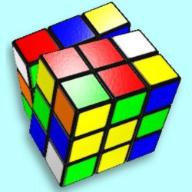Let A, B, and C be independent events. Prove that
P(A ∪ B ∪ C) = 1 − (1 − P(A))(1 − P(B))(1 − P(C)) either using De Morgan’s laws or expanding the right-hand side product and using the principle of inclusion-exclusion.
Math Help Please?
2018-07-08 12:05 am
回答 (1)
2018-07-08 1:46 am
By De Morgan's laws:
(A ∪ B ∪ C) = (A' ∩ B' ∩ C')'
With independent events, the probability of the intersection is simply the product of the probabilities:
Rule --> P(X ∩ Y) = P(X) * P(Y)
P(A' ∩ B' ∩ C') = P(A') * P(B') * P(C')
But we want the complement of that event:
P((A' ∩ B' ∩ C')')
The probability of the complement is 1 minus the probability of the event.
P((A' ∩ B' ∩ C')') = 1 - P(A' ∩ B' ∩ C') = 1 - P(A') * P(B') * P(C')
Also:
P(A') = 1 - P(A)
P(B') = 1 - P(B)
P(C') = 1 - P(C)
So finally we get:
1 - (1 - P(A))(1 - P(B))(1 - P(C))
(A ∪ B ∪ C) = (A' ∩ B' ∩ C')'
With independent events, the probability of the intersection is simply the product of the probabilities:
Rule --> P(X ∩ Y) = P(X) * P(Y)
P(A' ∩ B' ∩ C') = P(A') * P(B') * P(C')
But we want the complement of that event:
P((A' ∩ B' ∩ C')')
The probability of the complement is 1 minus the probability of the event.
P((A' ∩ B' ∩ C')') = 1 - P(A' ∩ B' ∩ C') = 1 - P(A') * P(B') * P(C')
Also:
P(A') = 1 - P(A)
P(B') = 1 - P(B)
P(C') = 1 - P(C)
So finally we get:
1 - (1 - P(A))(1 - P(B))(1 - P(C))
收錄日期: 2021-04-24 01:04:23
原文連結 [永久失效]:
https://hk.answers.yahoo.com/question/index?qid=20180707160518AATQcb6

